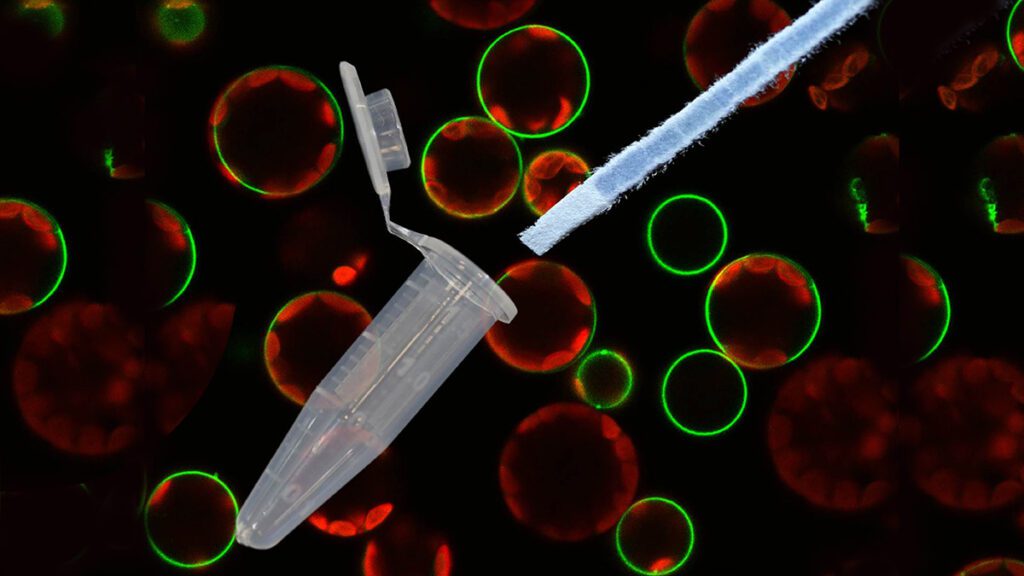 Image Credit: The University of Queensland
Image Credit: The University of Queensland
As the pandemic continues, scientists and researchers all over the world have been working tirelessly to innovate and find solutions that will mitigate the spread of the pandemic.
Recent COVID-19 tech that helps analyze and extract genetic material has displayed promising potential for accurate, cheaper mobile testing, including airports and remote testing centers.
Professor Jimmy Botella and Dr. Michael Mason of the University of Queensland have developed ‘Dipstick’ technology that allows genetic material to be extracted in under 30 seconds and offers a full molecular diagnosis in 40 minutes.
Professor Botella commented that “the processes currently achieved using large and expensive commercial set-ups that require multistep procedures and specialized laboratory equipment”
In contrast, Dipstick tech is cheaper and can be found almost anywhere, without the need for a laboratory or specialized equipment. The COVID-19 tech enables the purification of DNA and RNA nucleic acids from patient samples – a critical step in coronavirus diagnosis.
Combined with a portable diagnostic machine, that allows for faster identification and isolation of positive patients, that in turn vastly reduces the spread of the disease.
Botella added “We’re hoping it will be used to expand COVID-19 diagnostic testing to non-laboratory environments such as airports, remote testing centers and GP clinics.”
This process can be used to extract genetic material from almost all living organisms.
Dr. Michael Mason said the team had already applied the technology in other areas, primarily to fight plant pathogens.
Research has showed that dipsticks can be produced cheaply, quickly and in bulk by using a household pasta maker.
The simplicity of the manufacturing process and the low-cost and accessibility of the needed materials is a huge advantage for this COVID-19 tech. This diagnostic tool will help research facilities and communities in both high- and low-income settings.